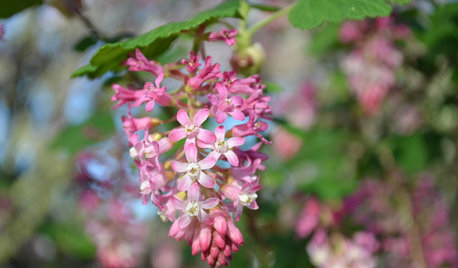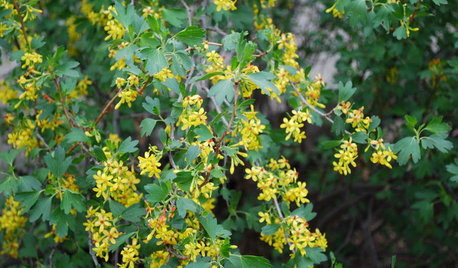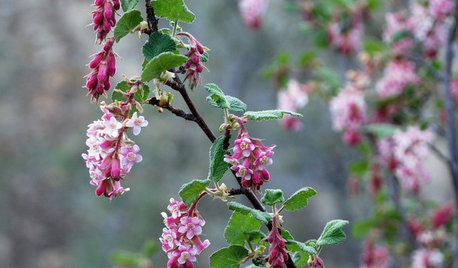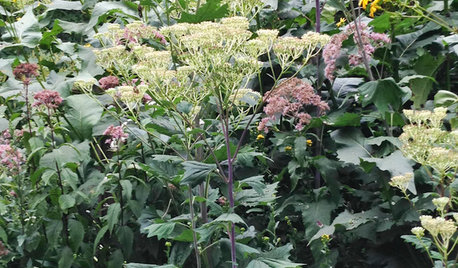black currant - how tall?
grow_darnit
15 years ago
Featured Answer
Sort by:Oldest
Comments (20)
jellyman
15 years agoRelated Discussions
Black Currants - no Berries
Comments (1)Some black currants require different variety for pollination. Which variety do you have? Usually they start fruiting in its first (just a few berries)and definitely in second year. You should be swimming in currants by now. Olga...See MoreGrafting a Black Currant Scion onto a Blackberry Rootstock
Comments (4)i have to start out by saying i am no expert just a hobby gardener. most hybrids are from seedlings and some are from mutations/sports but very few hybrides are the result of grafting. it can happen where they throw off a graft chimera and a new plant will result but again fairly rare. it might be worth a shot to see if they are graft compatable. if they are graft compatable than i would get plants started from each. one blackberry rootstock and one currant than top graft the other to it. than use just those grafted plants to try to get them to cross breed it might not increase the chances of success. there is always arguments on if rootstocks influence any resulting seedlings. my point of view is that they share hormones and chemicals so it might not be a huge influence. but if it increases the chances a tiny fraction that there would be a better chance for the two not very close related plants to be able to produce seeds and than the seeds sprout it would still be more of a chance than it would have had withought the rootstock infuence. and even if you do get a hybrid there is nothing saying it will produce fruit there has been allot of hybrids that where completely sterile never producing any flowers at all. it might be worth a try if you have the time patience and grafting skills....See MoreAnybody growing black currant in MN?
Comments (35)Hi All - thanks so much for the great discussion and tips. I have been growing a pink currant but don't know the name - it is thriving here in Colorado (I keep getting new plants sprouting everywhere near the original). The birds don't bother the currants at all here. They eat everything else I grow! I wanted to add a black currant and just called Lucile at Whitman and ordered - what a nice lady! She had the Ben Lomand black and the Russe (sp?) which is not listed in her catalog but she is very happy with that variety so I am trying both....See MoreAnyone have a Ben Sarek black currant?
Comments (1)I have Ben Cowan, Ben Sarek, Titania and Tiben. The Ben series are shorter plants, about 1/2 the height of Titania (tiben is too young to say). Sarek is fairly spreading with canes falling to the sides while Titania and Tiben are more upright. Last year my Ben Sarek produced 1097g. 12 Brix. Titania planted right next to Sarek produced 2576g. 15 Brix. So Titania took up less side-to-side space, was about 2x as tall and produced over 2x the fruit and the fruit was 15 brix vs 12 and the berries were a bit larger on Titania. Even at 15 brix it was not something that I wanted to eat fresh but for syrup, jams and the like both were good. For plant form and productivity I would plant Titania over the Ben series. Tiben is still to early to tell, this year and next will give me more info. See my "Backard" report for photos and more info....See Moregrow_darnit
15 years agoalan haigh
15 years agoolga_6b
15 years agomootube
15 years agomootube
15 years agogrow_darnit
15 years agomootube
15 years agoalan haigh
15 years agoolga_6b
15 years agoalan haigh
15 years agoolga_6b
15 years agoalan haigh
15 years agoolga_6b
15 years agoalan haigh
15 years agoolga_6b
15 years agojellyman
15 years agoalan haigh
15 years agoHU-945553210
3 years ago
Related Stories

GARDENING GUIDESGreat Design Plant: Feed Wildlife With Flowering Currant
Blossoms and berries make this plant irresistible to birds, bees and other critters — and a treat for the eyes too
Full Story
FLOWERSGreat Design Plant: Golden Currant
Cheery yellow flowers with a spicy fragrance and tasty fruit make this native plant a delightful addition to a home garden
Full Story
GARDENING GUIDESGreat Design Plant: Ribes Malvaceum
Plant pink chaparral currant for graceful winter tassels and an excuse to make black currant tarts
Full Story
GARDENING GUIDESGreat Design Plant: Pale Indian Plantain Stands Tall and Proud
Height and generous flower heads earn Arnoglossum atriplicifolium the attention of both human and insect visitors
Full Story
COLOREvery Room Needs a Little Bit of Black
‘I’ve been 40 years discovering that the queen of all colors was black.’ — Pierre-Auguste Renoir
Full Story
BLACKThe Case for Beautiful Black Doors
To-do list: Freshen up the house with crisp black doors, inside and out
Full Story
COLORBathed in Color: When to Use Black in the Bath
Dare to bring black in for a dramatic and elegant bath that's different from all the rest
Full Story
DECORATING GUIDESWhat Goes With Black Walls?
Once seen only in teenagers’ bedrooms, black these days is chic and showing up everywhere. Learn which colors are its perfect partners
Full Story
COLOR10 Pair-Ups for Black in the Kitchen
Combine black with other colors to add drama, polish and modernity. It also can make a kitchen look more spacious
Full Story
DECORATING GUIDESColor Feast: When to Use Black in the Dining Room
Black is anything but basic when you glam up a dining space with it. Here's how to do it right
Full Story




alan haigh